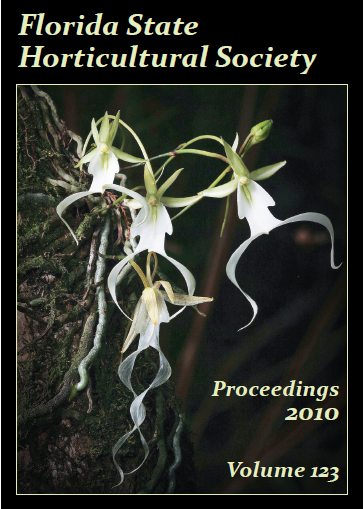Handling & Processing
Abstract
Citrus canker caused by the bacterium Xanthomonas citri subsp. citri (Xcc), was once the scourge of the Florida citrus industry from the early 1900s on and off until the early 1990s. It has been replaced in importance, for the most part, by citrus greening but still continues to be a problem for Florida fresh citrus. The most recent canker outbreak peaked soon after the 2004 hurricanes, where the rains and winds spread the disease more quickly than it could be controlled. Although some of the strict quarantines placed on the citrus industry at the beginning of the latest canker epidemic have been lifted, there is still a problem with shipping fruit from cankered areas out of the country. Although work is continuing on postharvest measures to ensure that no live canker bacteria leave the packing houses, preharvest measures are also being improved to decrease the disease pressure in the groves as well as to lower incidence of infection on the fruit. Most commonly, a copper formulation is sprayed on the trees soon after petal fall for control of canker. Copper has long been used as an effective fungicide because fungi are sensitive to metals. However, the sprayed copper tends to be powdery and a good deal of it is removed from the leaves and fruit when it rains. Rain and wind are the chief means of carrying the canker bacteria from diseased to healthy plants and curtail the efficiency of copper applications. In 2009 copper and carnauba wax as “a sticking agent” were mixed and this formulation was used to spray experimental trees in a commercial grove. At the end of the growing season there was a significant reduction in canker lesions on the fruit as well as a dramatic reduction in melanose. With the emergence of yet two more fungal diseases on citrus (citrus black spot, Guignardia citricarpa Kiely; and sweet orange scab, Elsinoe australis Bitancourt& Jenk.), the increased exposure of these citrus pests to a pesticide that is maintained and protects the plant surfaces during times of great disease pressure will facilitate the harvest of more unblemished and marketable fruit.References
- Berger, E.W. 1915. Citrus canker, its origin, distribution and spread. Proc. Fla. State Hort. Soc. 28:71–80.
- Brunings, A.M. and D.W. Gabriel. 2003. Xanthomonas citri: Breaking the surface. Mol. Plant. Pathol. 4:141–157.
- Das, A.K. 2003. Citrus canker—A review. J. Appl. Hort. 5:52–60.
- Timmer, L.W., S.M. Garnsey, and J.H. Graham (eds.). 2000.
- Compendium of citrus diseases. Amer. Phytopathol. Soc., St. Paul, MN.
- Walker, J.C. 1957. Plant pathology. McGraw-Hill Book Co. p. 647–655.

